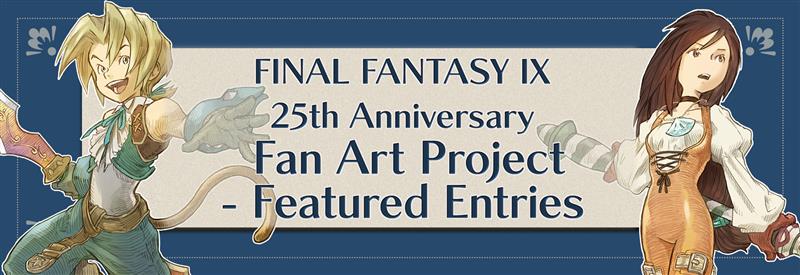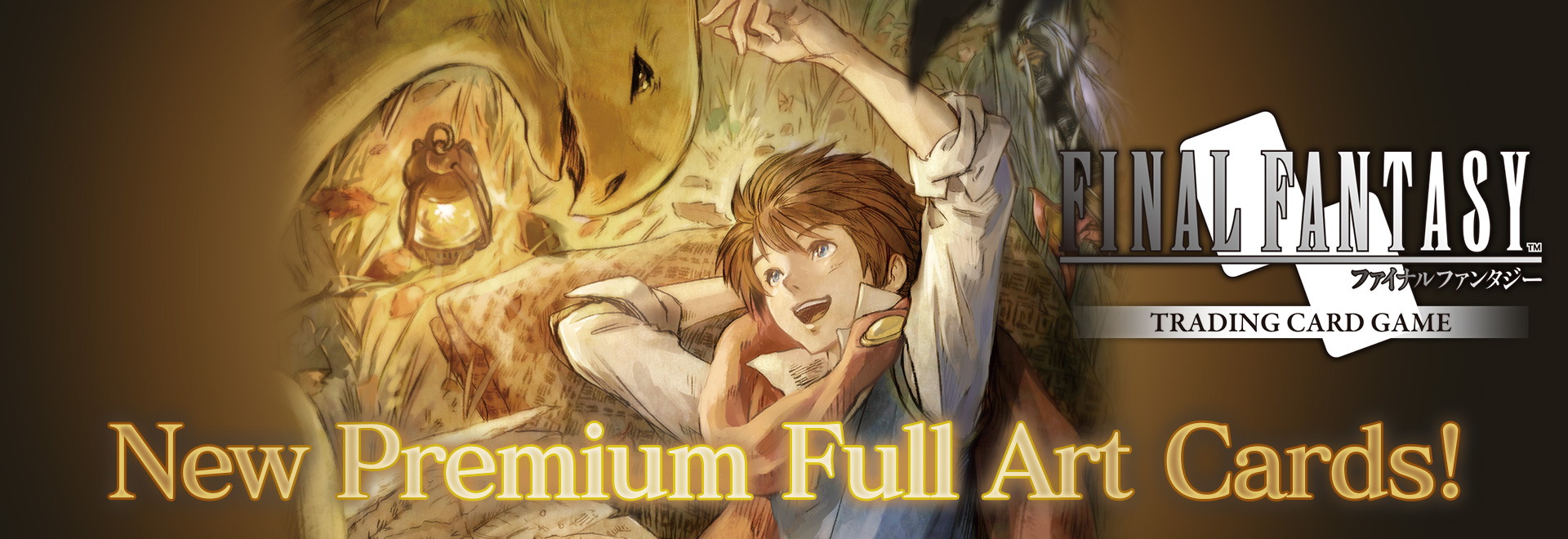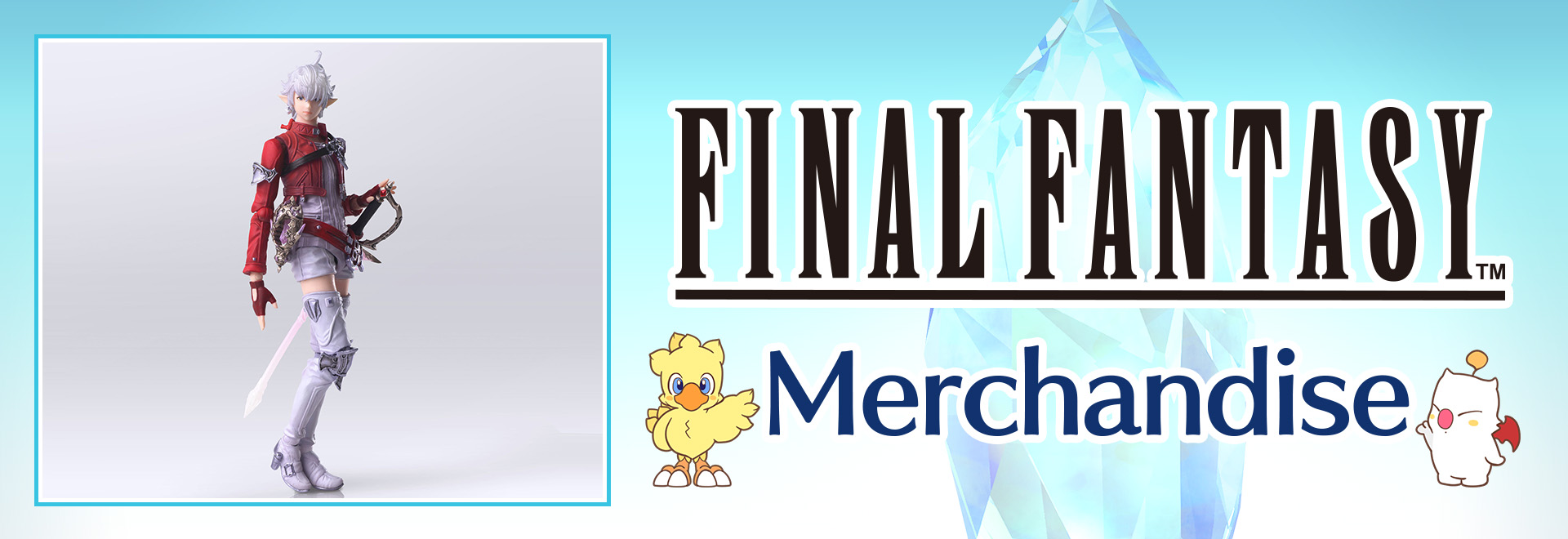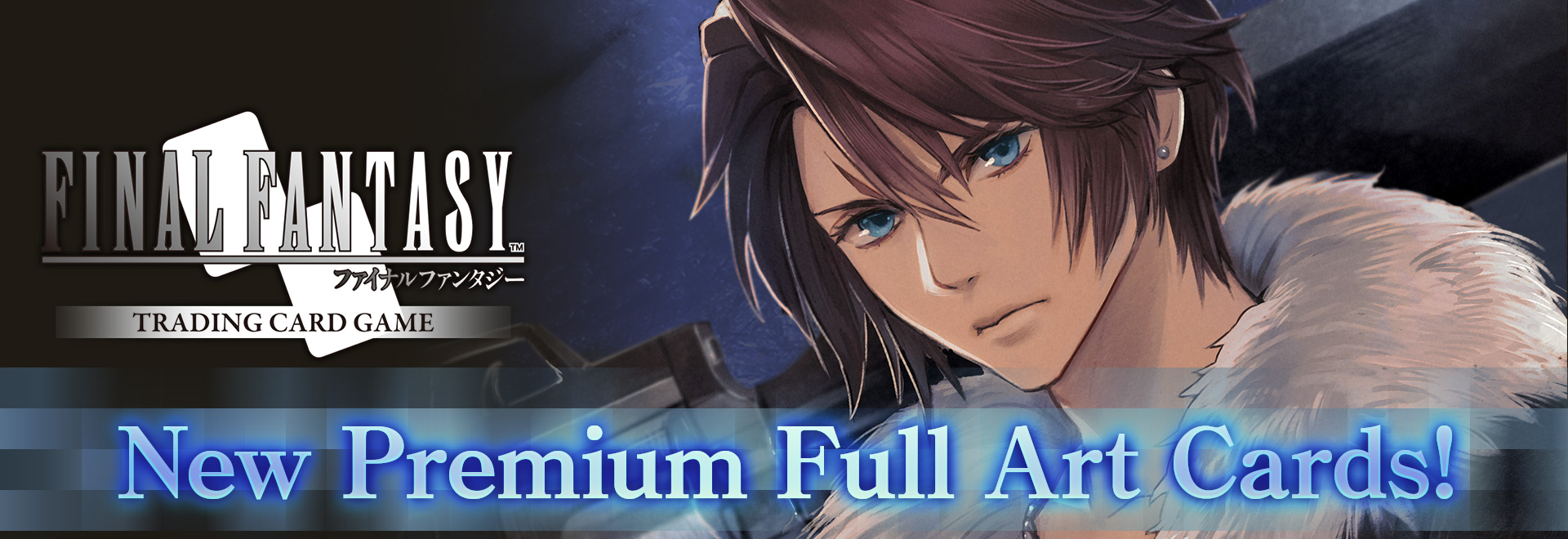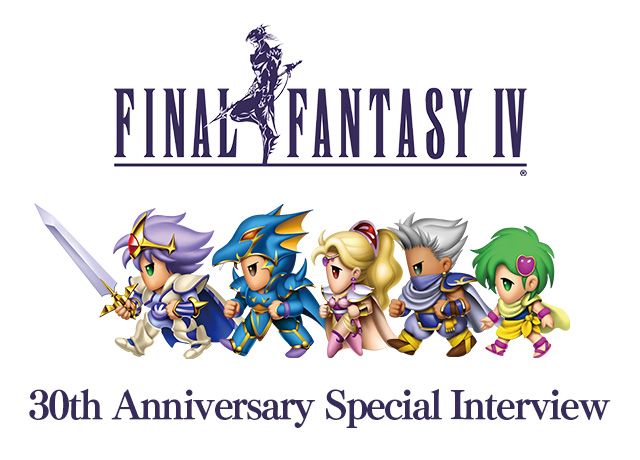
July 19 marks 30 years since FINAL FANTASY IV’s release. We asked FFIV game designer and scenario writer Mr. Takashi Tokita his feelings about the game 30 years on, memories looking back on its development, and more!
―How does it feel knowing that FFIV has reached its 30th anniversary?
Tokita: 30 years is a long time, yes, but the FINAL FANTASY series itself is also now already at its 34th anniversary. I never imagined the game industry would last this long, or that Square and Enix would merge, let alone that I would still be working here all this time later. FFIV was the first FF title on the Super Nintendo Entertainment System (hereafter SNES), released when the game industry was growing rapidly. To think that was 30 years ago, I have to pat myself on the back for sticking with it for this long. [laughs] It is deeply moving to know this title is beloved by the fans after so much time.
―How many years had passed after you starting working in the game industry when FFIV was under development?
Tokita: I was 26 during FFIV’s development and entered the game industry in a part-time position at 18, so that would have been my eighth year. I entered Square at 20 years old and handled graphic design part-time, doing things like thinking up story ideas while inputting sprites. When I first joined the company, Aliens 2 for MSX was being made, after which I helped with monster design and the like for FFI, then during FFII’s creation I got assigned to Hanjuku Hero. After that, I worked on THE FINAL FANTASY LEGEND as FFIII’s development was under way, and when it came to FFIV I was involved from the beginning. FFIV marked my becoming a permanent employee, and at the same time my job changed from sprite designer to game designer. You could say I went through both a “class change” and a “job change” at the same time. [laughs]
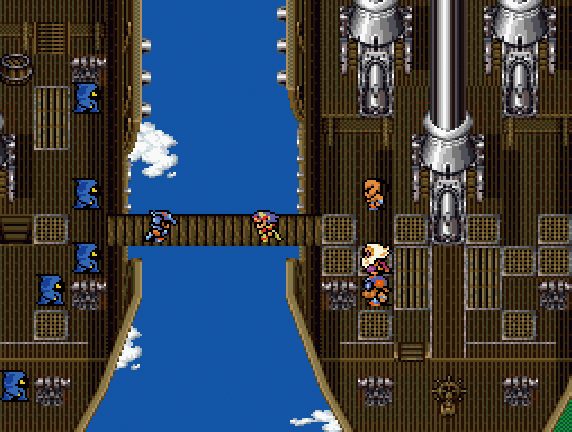
―FFIV is known for having strong characters and a story full of dramatic twists. How did you and Mr. Hironobu Sakaguchi go about creating such a game?
Tokita: Mr. Sakaguchi was the director, but considering it now, I think his role may have had more aspects akin to producer. While Mr. Sakaguchi put together the plot and scenario – things like the world map and regions in the game or overall flow of the story – we staff would chime in to get the kind of characters and events we wanted included. Then when actually coding the game, each staff member would implement character placement, scripts, dialogue and so on ourselves.
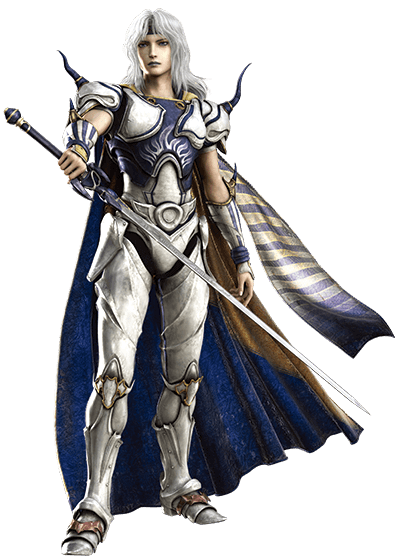
―There are a so many unique characters appearing in FFIV. Who was created first? The protagonist Cecil?
Tokita: Who was it...? I think it might have been Cecil, him being the main character and all. I’m pretty sure the concept of changing from dark knight to paladin was there from the start, as well as the rival Kain and heroine Rosa. From there, to keep with FF’s balanced variation in character age and gender, I thought that it might be good to include children – a pair of twin mages with one a white mage and the other a black mage, from which Palom and Porom came to be. Yang and Edge and the like were my idea as well, to include a kind of sense of variety.
From FFI to FFIII, it started with FFI being an RPG intended to show off the battle scenes, FFII’s well-developed characters already establishing a standard for games driven by characters and story, then FFIII having the job change system which made for even more invigorating battles. So with FFIV there was of course an element of wanting to implement what made the three previous titles so good, and we did things like including the elemental lords with that in mind. We wanted players to be able to have conversations like, “How far have you made it?” “To the Autarch of Flame,” and all that. I think in that sense, we amplified the good parts of FFI, FFII and FFIII for use in FFIV.
―Are there any scenes from the game you’re fond of in particular?
Tokita: Each one resonates deeply with me. Scenes like the one where Rosa first comes into Cecil’s room, Mr. Nobuo Uematsu and I put our two heads together trying to figure out when the music and sound effects should play there. That was also early on in development, so I think we did more trial and error to see what staging worked best, including sound design, with that scene than any other.
―If we’re not mistaken, FFIV was the first title in the FF series to portray a romantic relationship between characters. Were you purposefully trying to include elements that could appeal to a more mature audience?
Tokita: Mr. Sakaguchi wanted a plot that included that from the very beginning. Speaking of, in FFV there were two heroines, so maybe he wanted to do the opposite from FFIV. FFVII has two heroines as well. I feel that one appeal of character-driven RPGs is players can talk about which character they like, and thinking about it now, that’s been true even since FFIV’s time.
―FFIV has many aspects where characters’ sentiments and humanity are really profoundly portrayed. Is there anyone from FFIV whose character you like especially?
Tokita: I gave life to them all myself and essentially implemented the characters’ movements to match the dialogue at the same time, so it feels almost as if I acted each scene out personally. I really do adore them all. I thought it might have been better to develop Rosa’s character a little more, but if everybody had too rich of a personality that wouldn’t be good. She’s such a strong character some might say it’s almost scary. Cecil isn’t really the forward type, so he needs all the people around him to pull him along. Palom and Porom’s childish innocence allows them to do that, and Cid acts as a father figure so there’s things only he can say – it felt like we were creating a drama through the supporting characters. Cecil’s story with the Lunarians is the main part, upon which there was the love story that involved Kain and Rosa as well, and aside from that it came down to how the other characters could enhance those stories. Those were the kind of things we worked toward while creating the game.
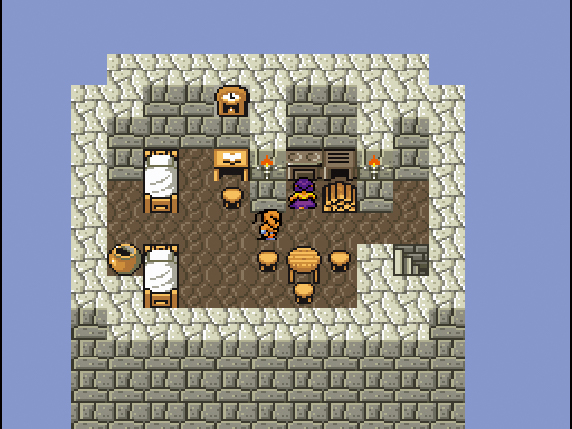
―The frying pan given by Yang’s wife was an especially memorable moment. How did you come up with that?
Tokita: Farewells are so intensely dramatic, so our original plan was for characters to start dying one after another. But Mr. Sakaguchi didn’t think that was a viable element in a video game and instead wanted to keep members alive, including them all in the party. We were able to make that happen in later ports of FFIV, but there’s no showmanship in just having everyone live on and on forever, so with Yang we had you go to his wife and get the frying pan that has the power to wake him up. In FFIV for Nintendo DS, we included a function that shows you what the party members were thinking. With that, we made a point to add lines like Cecil mistakenly thinking something like, “Oh, if we cook food with this...!” upon getting the frying pan.
In FFII there was a scene where Firion is given a sword by the mother and child at the Dragoons’ castle after Ricard dies, and we wanted to do the same kind of thing where a character bestows an important item of theirs to the player. However, it’s suffocating if the story is serious the whole time, so we tried to find something that might make people laugh a little. To that purpose I added the textless scene where Cid and Edge and so on are goofing around, which was a nice break for me. Today it’s typical to have each section of a game handled by a different person, but back then I genuinely did everything myself, so the process could wear you down. [laughs] There’s a lot of pressure knowing the game won’t get anywhere if you don’t make it yourself, so you kind of have to find ways to let yourself relax or just little fun things in the development process. The airship repairing scene was one of those, I enjoyed making that.
―There were some dynamic character sprite animations, even from an artistic perspective.
Tokita: Mr. Sakaguchi suggested that giving characters certain movements might be good, so we came up with various generic actions like raising a hand or nodding and that was how those animations started to come together. It was interesting because characters’ personalities also naturally developed as we put together story scenes, and certain animations would become associated with certain characters. Edward often looked downward whereas Yang wouldn’t do that so much, for example.
Data limitations wouldn’t allow us to keep every single line of dialogue, to the point where we had to reduce it down to about 1/4 the volume we had planned so all scenarios could be included. Thanks to that, I think we were able to come up with using poses like casting one’s eyes downward to create silent moments in the dialogue where players could imagine what characters were thinking or feeling. This is true of recent anime and manga too, but I think there’s too much explanation in games today. Still, some people struggle if things aren’t explained to them. In that sense, I think that we were able to give RPGs a format that effectively asked players to use their imaginations.
―Do you have a favorite character sprite?

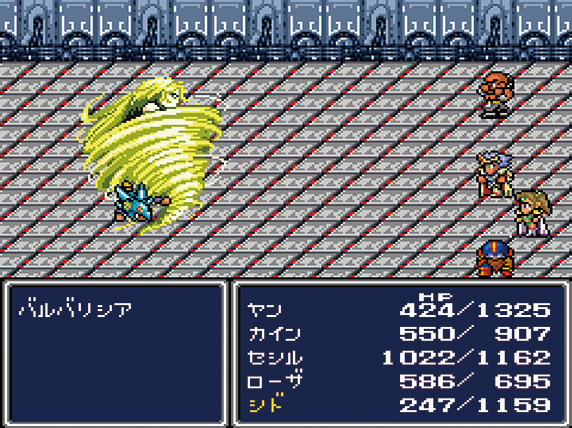
Tokita: If we’re talking specifically about sprites, I have to say I’m a fan of Kain. Even from the point where there was just Mr. Yoshitaka Amano’s character design, with the upper half of his face covered in dragon-like armor and the bottom half visible, Kain felt like the hero. And he’s crucial to the story as well. Being frank, Cecil’s dark knight battle scenes aren’t all that cool, but comparatively Kain the Dragoon is so cool, with his Jump ability and all. I think the battle with Barbariccia is pretty well known, but I was hoping players might get the feeling that perhaps something happened between her and Kain while he was under Golbez’s control.
―Golbez, the Archfiends and other enemy monsters were brimming with personality as well. Do any of them stand out in your memory?

Tokita: Of the four Archfiends I must say I’m a big fan of Rubicante. He’s not exactly the head of the squadron, but always seems to show up when big things are happening. We assigned the Archfiends elements to make them distinguishable from an RPG perspective and Rubicante is the one who ties them all together, so he’s not only strong but a man of character. Him healing your party members despite being an enemy was one way we tried to convey all that. It’s good to have an enemy character or two like that, right? Scarmiglione, Cagnazzo, Barbariccia and Rubicante all had such well-established characters, I really like the four of them.
―We were curious, how did Golbez and the Archfiends come together as they are in FFIV’s story?
Tokita: There are a lot of theories and rumors about this, such as Rubicante having once been a wizard and so on, but we actually didn’t put any thought into that at all. This is just my take thinking about it now, but as Golbez’s actions aren’t his own, I think the Archfiends could have been different people at one point as well. If they were always exactly the kind of people the story portrays them as, that would make them pretty eccentric; a little off to say the least. [laughs] But if we included sympathetic backstories for them in the game, players would be apprehensive to take up arms against them. This is only what I imagine might be, but they probably were normal people or wizards or whatever originally.
―The Archfiends’ sprites were so colorful, it really made them memorable.
Tokita: Yeah, and with Active Time Battle (hereafter ATB), boss’s designs would change over the course of a fight, taking off a cloak or having tsunamis and tornadoes appearing. That let us portray them in such a dynamic way. I think the impression those battle scenes left are part of what makes these characters so memorable.
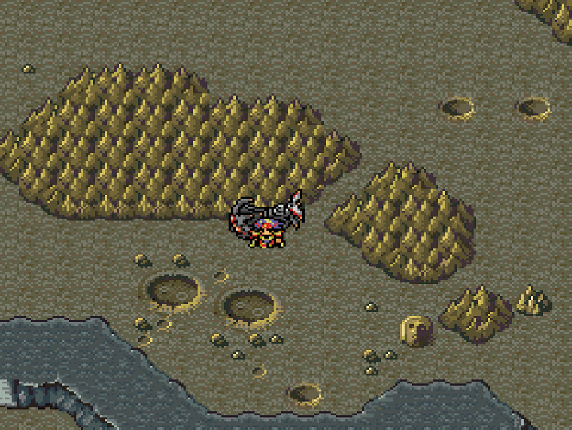
―What was the reason for putting the last dungeon on the moon?
Tokita: I’m pretty sure that was part of the plans Mr. Sakaguchi had for the plot from the beginning. My first thought upon hearing it was, “Would they be able to breathe?” but on a moon in the universe of FFIV I suppose they could. [laughs] In FFIV you go to both the underworld and the moon, so I feel like it’s got some of the most varied areas in FF. Science fiction was popular at the time and FFI had the space station-like Flying Fortress, so I think Mr. Sakaguchi had part of the story take place on the moon to allow even greater exploration in that sense.
―You mentioned including the good parts of FFI through FFIII in FFIV, but was there anything you decided to change?
Tokita: FFI was a system-focused game, while FFII was story driven with a focus on character growth, and FFIII was about enjoying all the various jobs available to you. In response to that, with FFIV we tried to figure out how best to use the job and battle system with the story and characters we had created, trying to bring it all together effectively.
For example, in contrast to characters like the dragoon Ricard or pirate Leila in FFII who start with a class but can be leveled up however the player wants, in FFIV we created characters that were clearly a specific type even down to battle commands. The ATB system itself was entirely new, so adding brand new jobs or commands would have been confusing. I think each character having their own job that we were already very familiar with allowed us to bring all these different elements together well. Having jobs already established for each character gave us the direction needed to bestow each of them their own role in the story. Rydia is only a child, but her strength comes from being able to summon Eidolons, things like that.
―In FFIII certain characters outside the party would join your team, but they didn’t participate in battles. FFIV has your party alternating through various characters, though.
Tokita: In FFII the fourth member of your party would switch out sometimes, and apparently FFIII was actually supposed to have a five-member party. The original plan was for Desch to participate too. We were able to do a five-member party on SNES, but we realized it was a bit much to make the whole game like that so it wasn’t permanent. We thought it might be interesting story-wise if the party members changed really flexibly, such as the excitement of Rydia suddenly joining in, or the loneliness you feel when Cecil is by himself. Those elements add so much to the game’s liveliness and pacing.
―There’s definitely an image of the game having a lot of story events taking place during battles.
Tokita: Well, the battles were where we really got to show off the characters, so including dramatic scenes in them came about pretty naturally. We took great care with the story scenes, of course, and we also worked hard on the battle scenes, even including times where a scene would take place while switching between them. I think the hugeness of the last battle really shows our best work utilizing that. The higher specs of the SNES allowed us to accomplish so much more. We were finally able to do the things we’d dreamed about, almost like being a middle schooler whose allowance has gone up, getting to buy that thing you’ve always wanted. [laughs] I feel that all the love for games like FFIV and FFVII comes from their position as titles on new hardware, allowing bigger and better stories that could never have been told before. Maybe the kind of dramas born in that environment just stay in people’s hearts.
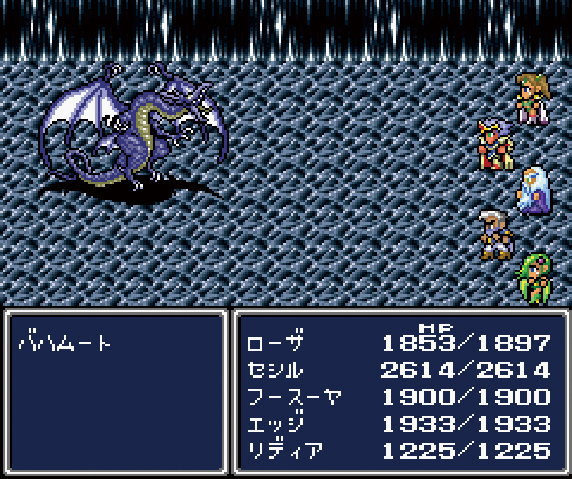
―What was your impression when you first saw the ATB system?
Tokita: The initial run of it just had everyone act in turn based on who was fastest. You couldn’t tell at all what was going on, so there was no time to think about weaknesses or anything of the sort and you just ended up spamming buttons... [laughs] We came to the conclusion that would never work, and I think from there we tried various things, eventually getting to where we tweaked the battles using a “waiting time.” We made it a little easier to play by implementing rules that included being able to “attack” right away, or things like strong summons and certain types of magic having a delay before they would activate.
Mr. Hiroyuki Ito created the battle system, and he was into watching F1 races. Apparently he came up with the ATB system when looking at the cars behind on laps, realizing that if someone was fast they could attack twice in one turn, while slower characters would only attack one time per turn. I think the process for getting to where the ATB system worked was through rules thought up for each character, like Edge being able to attack twice in a turn but having low attack power.
―This is also true of FFI through FFIII, but FFIV is a pretty difficult game. It felt like each and every battle was such a struggle...
Tokita: Yeah, FFI is hard because there’s limits on how many times you could use magic, and FFII’s skill system is what SaGa came to be based on, which isn’t easy either. FFIII progressed pretty quickly and you could change jobs when you wanted to, but in contrast the last dungeon is just devilishly long. [laughs] Even the common enemies in FFIV’s final dungeon were very strong. Every battle feeling like a struggle might come from FFIV being the first implementation of enemies that react in battle – the ones that do something in response to certain actions by the player. For example, you might attack a fire element enemy with water because naturally you’d think they’re weak to it, but instead you get counter-attacked. With ATB, counters take place in between typical attacks, so that probably made the battles feel tougher.
―Was there any talk after release about the game’s difficulty?
Tokita: Back then people couldn’t rely on the internet, instead exchanging information in person, so we created the game expecting players to experiment a little figuring out how to progress. Game development now places a lot of importance on how easy a game is to understand and to what extent you can make a game players will enjoy, but at the time it was a question of how challenging you could make your game. It was an era when that was considered an entertaining game, and the carts were expensive so we were trying to let players get as much time out of the game as possible too.
The lack of save points in FFIII’s last dungeon is something that sticks in your memory intensely, but in FFIV we made a point to include one before the boss. There were some disappointed voices of, “Hmph, so we just know that the boss is coming up?“ though. [laughs] We also balanced the game in this tiered way so you can’t get through dungeons without leveling up, and that might have felt a little challenging. You’re in big trouble if you don’t have levitate when you get to dungeons such as Sylph Cave or the Passage of the Eidolons. Things are different now, what’s valued is finding a smooth difficulty slope that keeps players from having to do things over and over again as much as possible.
―Being on SNES really expanded what could be included gameplay-wise, but the system’s greater range of sounds also contributed to advances musically, with many game music masterpieces born through FFIV’s development. Are there any tracks you like in particular?

Tokita: I like a lot of them, but I think the main theme (“Prologue”) is my favorite, with it also playing during the final battle and all. It plays at the game’s start when Cecil and Kain leave the castle together, too. It’s one of those cases in the FF series where a piece is used in kind of a similar way to DRAGON QUEST, very straightforward and grandly. “Theme of Love” is also all over the game, and personally I like the music played in the Tower of Babil (“Within the Giant”). I think that track is so unique even for Mr. Uematsu’s work, plus it’s also used in the last dungeon so at first it gives you a sense of urgency but ends up feeling so heroic. I love that.
“The Red Wings” is also used in the opening along with Mode 7’s scaling to create a really impactful and deeply memorable scene. That track plays in the last dungeon too, but we thought it wouldn’t be all that interesting to just make a track for the last dungeon and purposefully used it in the opening as well. It also plays during scenes where Cecil grows as a character, such as in Mount Ordeals.
―FFIV overall has a lot of cool and heroic music.
Tokita: Mr. Uematsu might have been thinking that if the graphics were going to be so much better the soundtrack had better match, so when composing I think he aimed for powerful, gallant music that sounds like an orchestra. Also, RPGs up until that point had each area’s background music (hereafter BGM) set, with a tower piece that played while in the tower for example, but in FFIV music would change on a certain line of dialogue and then continue playing as a battle starts. It was incredibly theatric and such a flexible use of BGM, I think that’s why so many players remember FFIV’s music so well.
―During the composing process, were there any times you put in requests for certain things to be done?
Tokita: Not especially. The scenarios came first, and while consulting with Mr. Uematsu he did suggest that Rydia should have a theme, but it wasn’t like we specifically requested Mr. Uematsu make themes for each character. It was a process of adoption or rejection, something like finding a balance by choosing which scenario to pair with which piece of music.
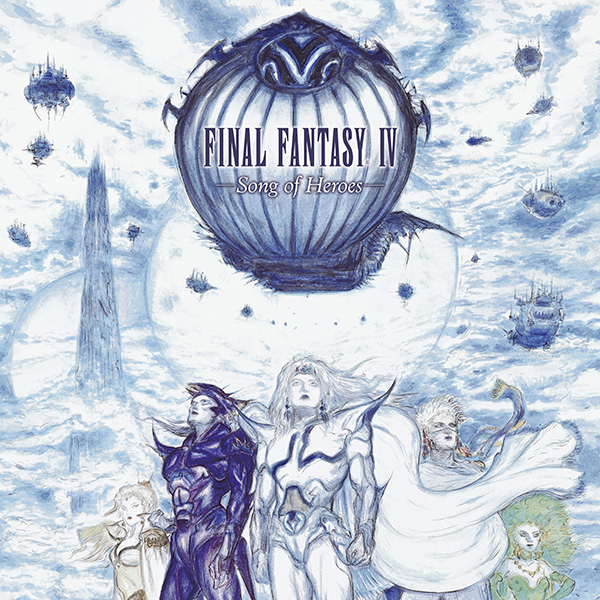
―Speaking of music, an analog LP commemorating the 30th anniversary of FFIV called FINAL FANTASY IV –Song of Heroes– is going to be released on August 25. Were you involved with that, supervising or otherwise?
Tokita: I haven’t had the chance to listen to it yet, but the four songs featured are an excellent selection of music! (LP includes 8 tracks total, with side A containing new arrangements and B side featuring original game audio) The department handling the LP sent me a proposal of the jacket art for approval. That art was by Mr. Yoshitaka Amano, drawn for the Nintendo DS version of FFIV. Originally the jacket this time was just going to be the characters without the Lunar Whale included, but I said, “Wait a second, you can’t have this illustration without the Lunar Whale,” and suggested that, if it all has to fit within a square, we should go with this layout to include it. The color scheme is blue and white to represent Cecil as a Paladin, with some Dark Knight color included as well. Rydia’s green really stands out amongst the blue theme, too. Upon first seeing this jacket art it really stood out how the male characters are all looking one direction, but the girls’ gazes are more towards the viewer.
I also like how round the Lunar Whale is in this illustration. When putting in the request for its design, I wanted something more like a living beast than an actual spaceship, so I asked for something like a whale. What I got back was so close to the animal itself. I had the team design the magical ship Lunar Whale in FFXIV to be like a whale too.
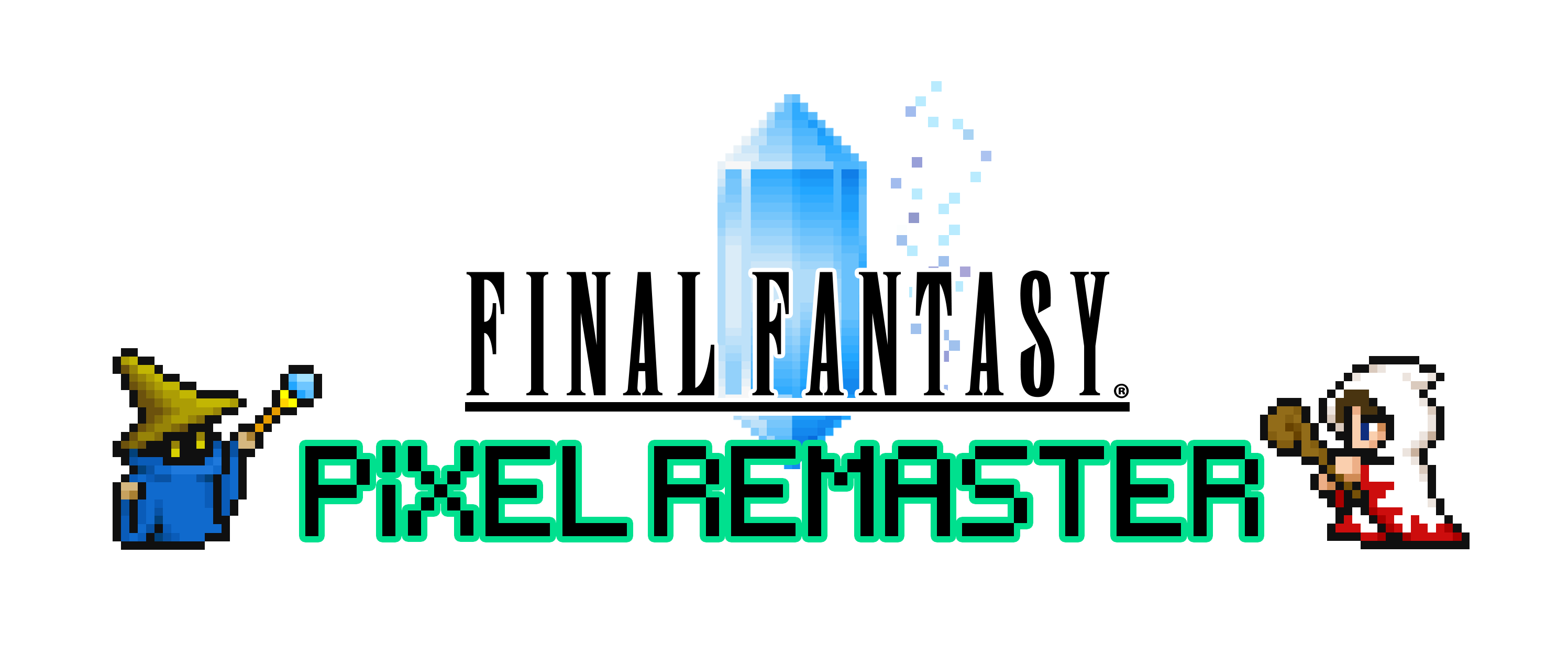
―It was announced at E3’s “SUMMER SHOWCASE” that the FINAL FANTASY PIXEL REMASTER series would be released. How is development for that progressing? And please let us know if there’s anything you really hope people will pay attention to in it!
Tokita: The development for FFI through FFVI is simultaneous this time, so I’m supervising FFIV. We’re mainly doing our best to stay faithful to the original pixel art, and beyond that it feels to me like the balance really comes down to finding that fine line of not-too-much detail we need to stay within.
I played an in-development build that takes about 30 minutes to get to where you defeat the Mist Dragon, so it’s got a very nice pace to it. Maybe even better than a lot of recent games. Modern films and TV shows move so much faster compared to the past, so while 3D games may not move at a pace that fits for me, I zip through older 2D RPGs. Although I may stumble a bit in dungeons here and there. [laugh] But I think there will be some adjustments to the difficulty, so you should be able to experience the exciting twists, character stories and take on the abundance of different bosses at a brisk rate. Development is going very well so I hope you’ll all give it a try!
―Lastly, please let us have a message for the fans of FFIV.
Tokita: FFIV has been very fortunate in terms of remakes and so on, even for an FF title. Personally I’m always open to those opportunities and I never turn a proposal down. Specifically because FFIV is an older game, I hope it gets played by newer gamers. On top of ports and remakes, we also were able to make FINAL FANTASY IV: THE AFTER YEARS, a continuation of the main game’s story. It wouldn’t be an exaggeration to call FFIV my life’s work, and each time it’s released on new hardware we get new users playing it, so it makes me incredibly happy to think that it very well may be enjoyed by parents and children across two or three generations. Although my own son has yet to play it; all he’ll touch is Fortnite... [laughs]
FFIV stays alive as FF continues to grow, such as the collaboration with FFXIV for example, and I think the dramatic elements and the like that were put forward with this first SNES FF title are now vital essences of what makes an FF game. STRANGER OF PARADISE FINAL FANTASY ORIGIN was also announced at E3’s “SUMMER SHOWCASE,” and this is yet another title that approaches the FF formula from a unique angle, really something with a unique spice to it. I was reminded of the character designs when we were creating The Bouncer; it’s been very nostalgic.
I hope that even more new players will try FFIV when the upcoming pixel remaster releases. I think FFIV would really translate well to film or theater. We were very straightforward with the drama in FFIV specifically because it’s an RPG, including some things that I’d probably be a little too embarrassed to include in games I make now. However, seeing how pure the characters and world still are, it just feels right, and that’s kind of where my roots sit. FFIV reminds me not to forget that we all started somewhere, and that I can’t forget where I got my start either.
―Thank you so much for your time today, Mr. Tokita!
Check out the details of FINAL FANTASY IV –Song of Heroes– here!


